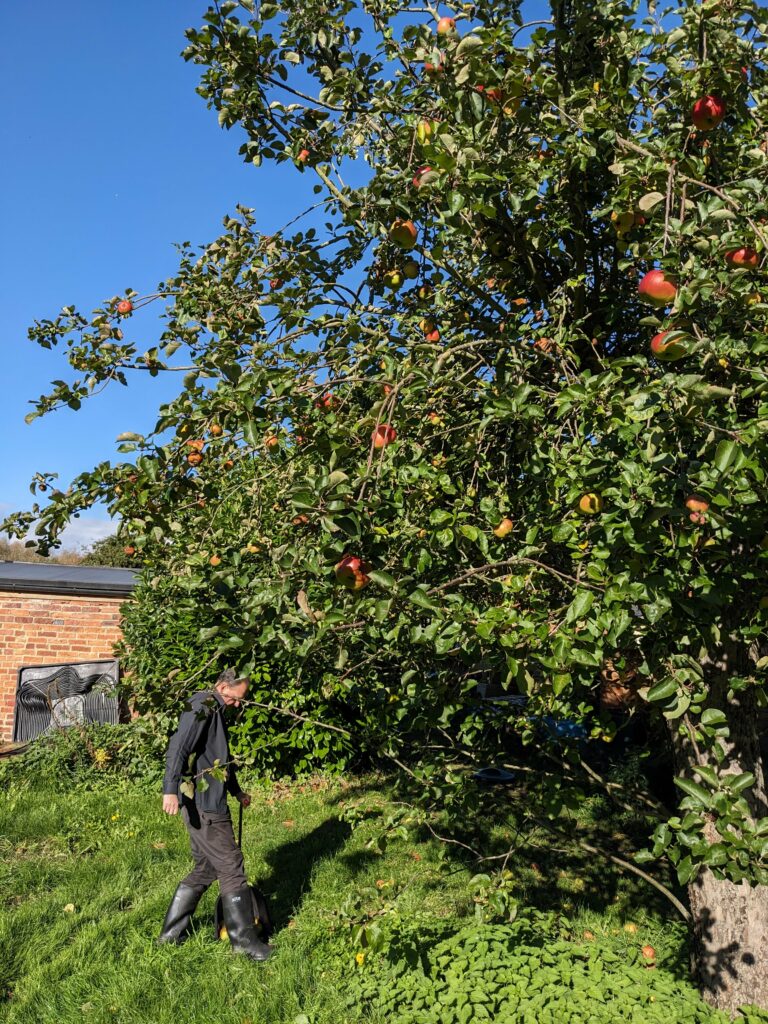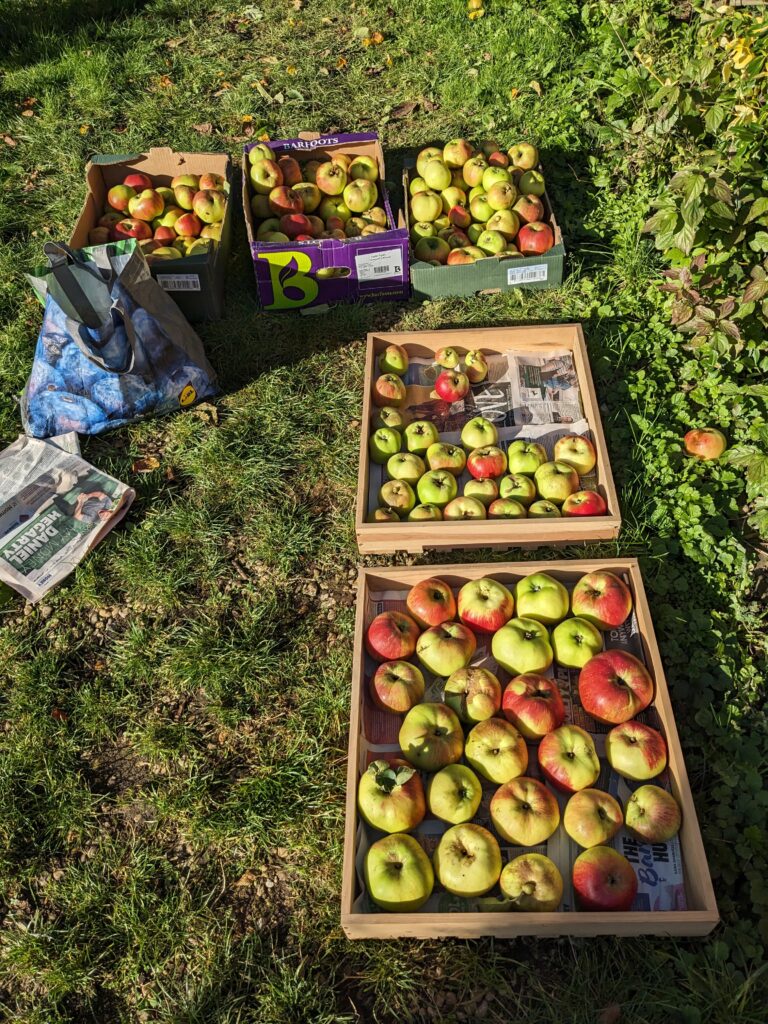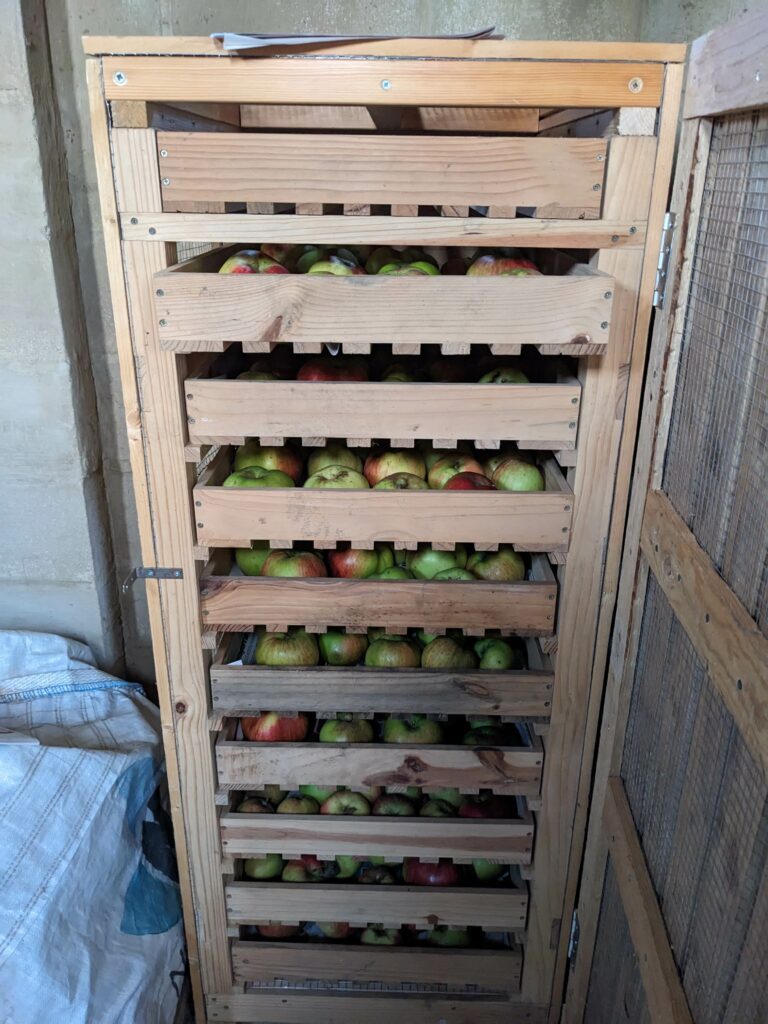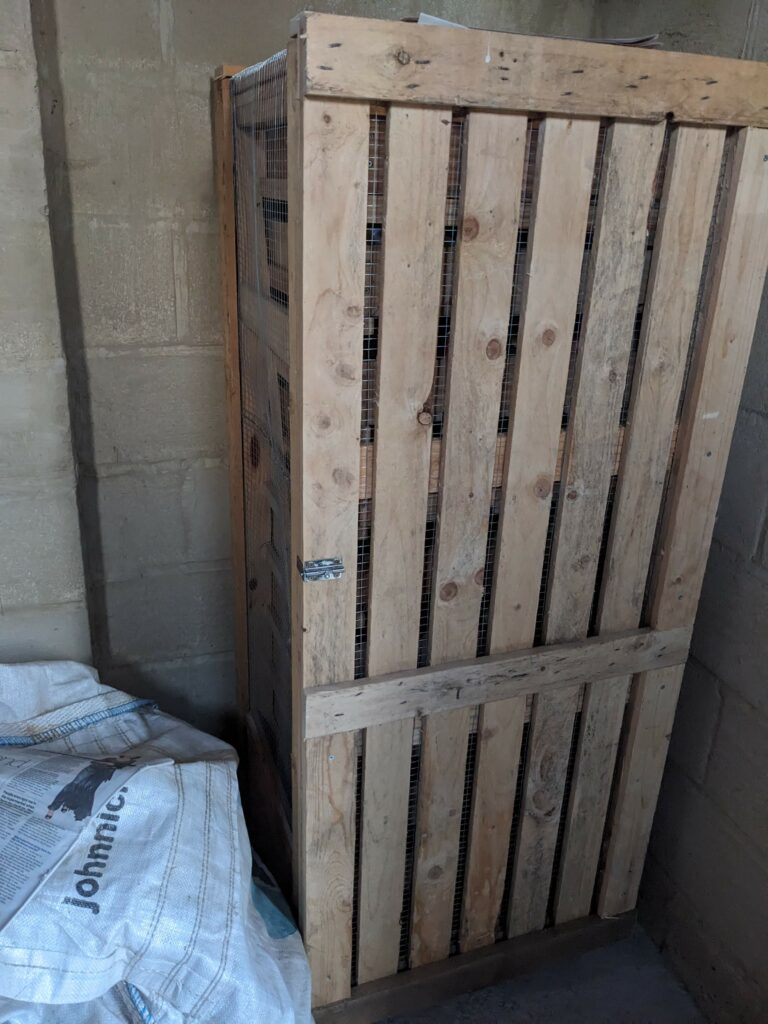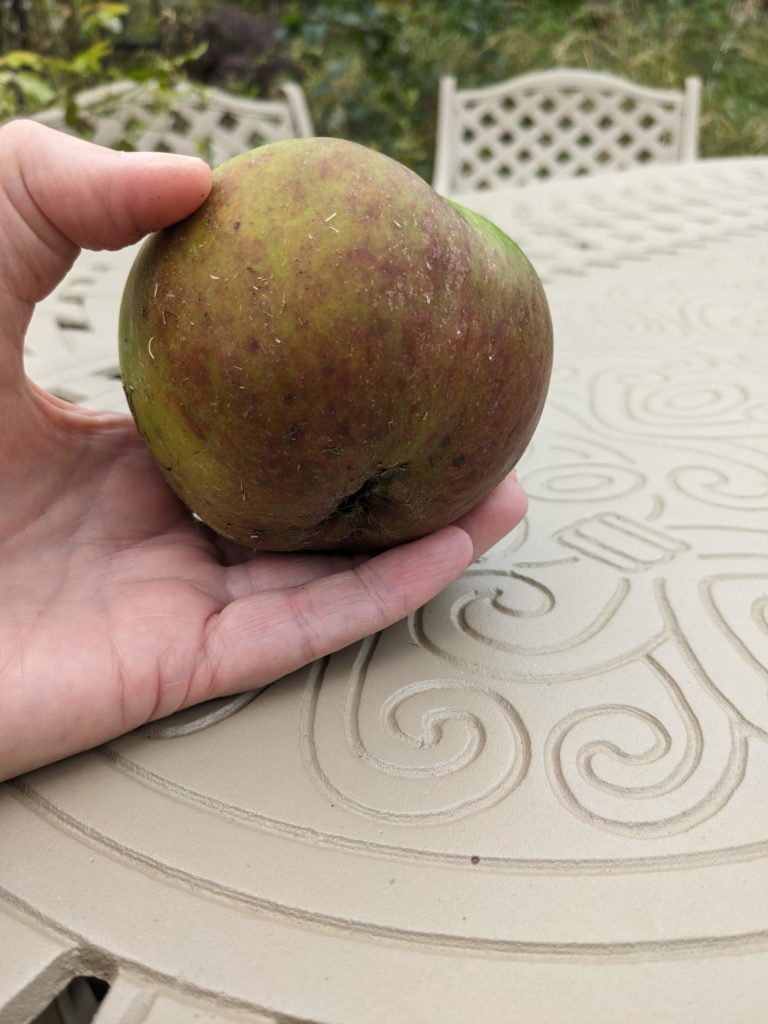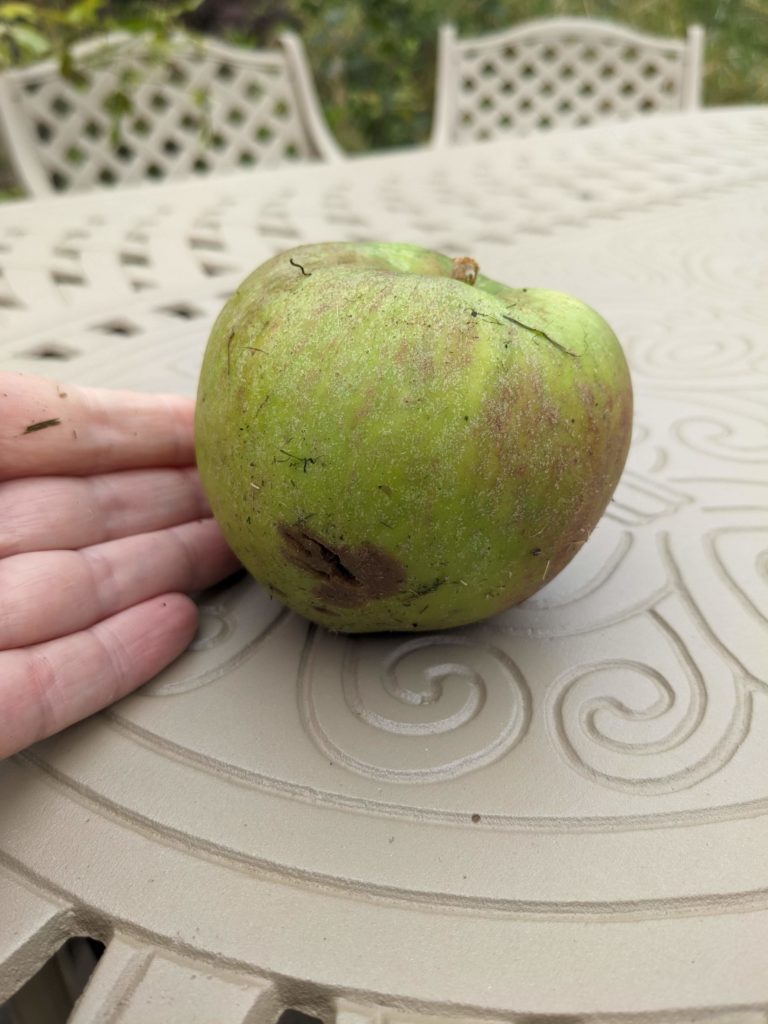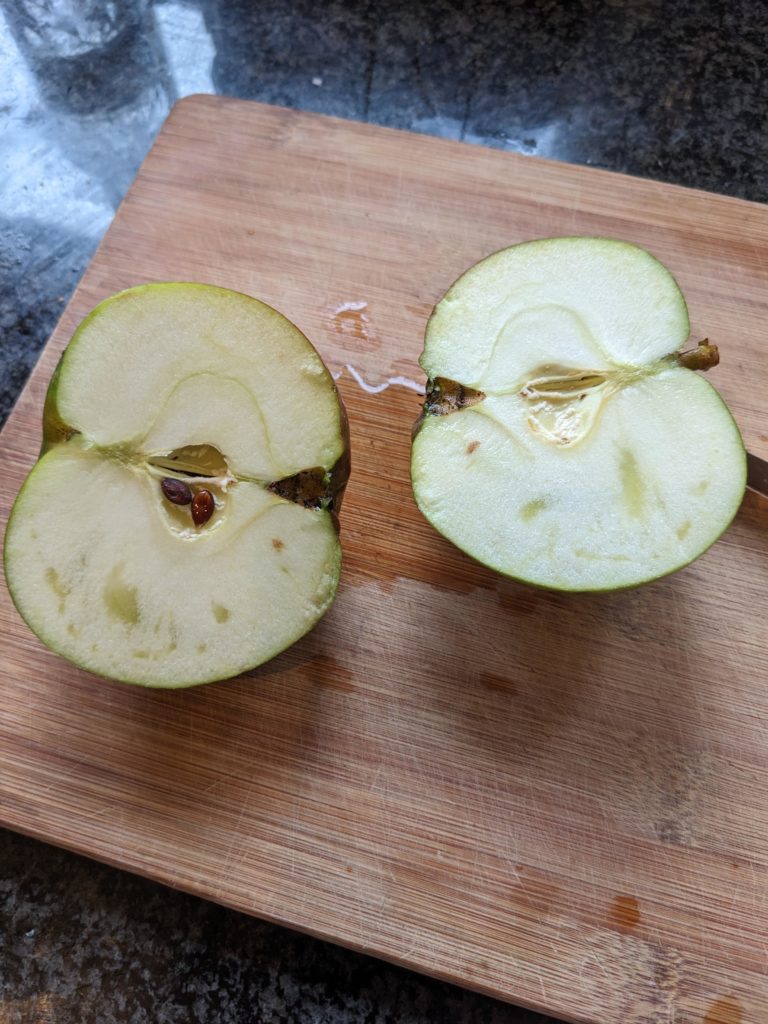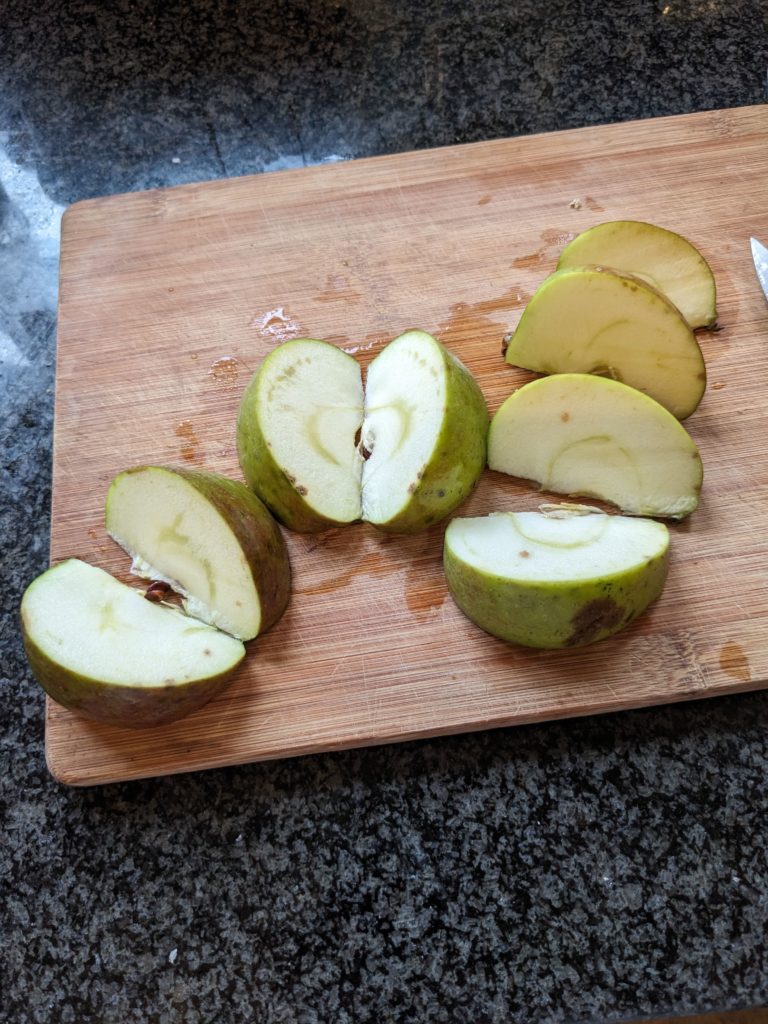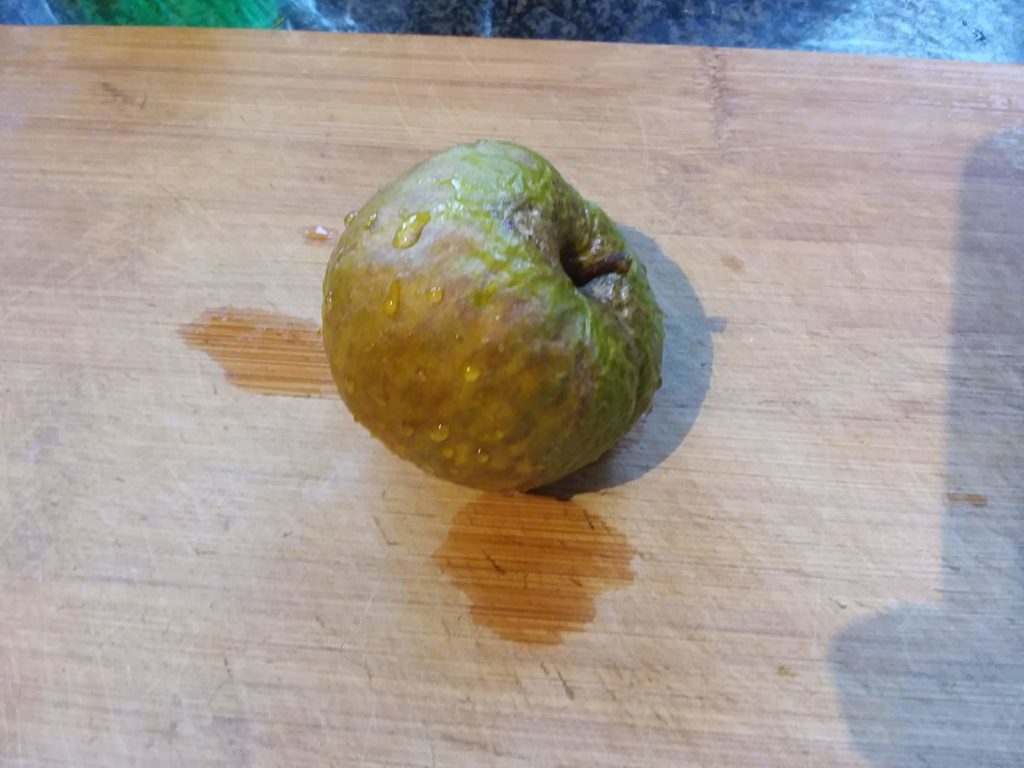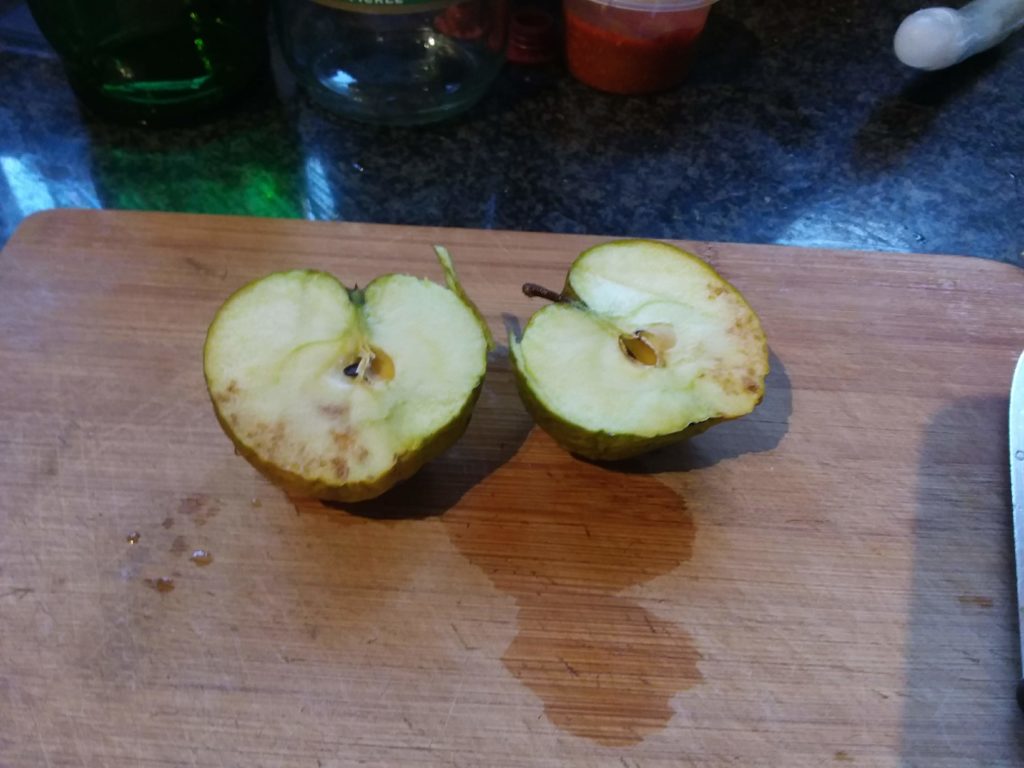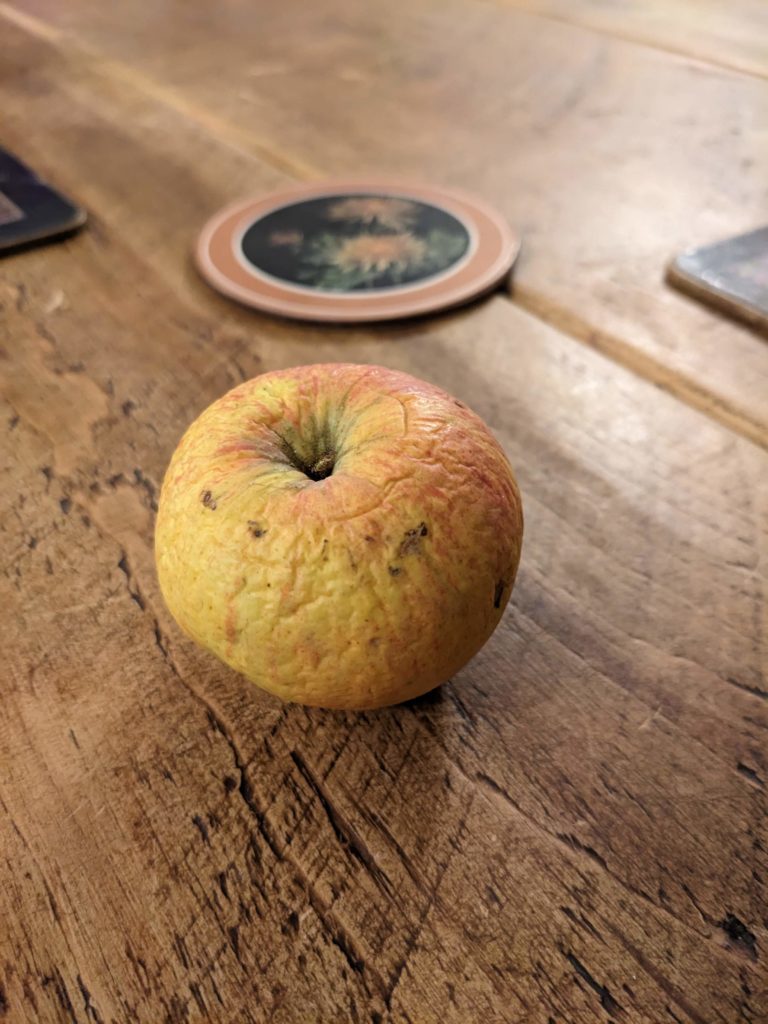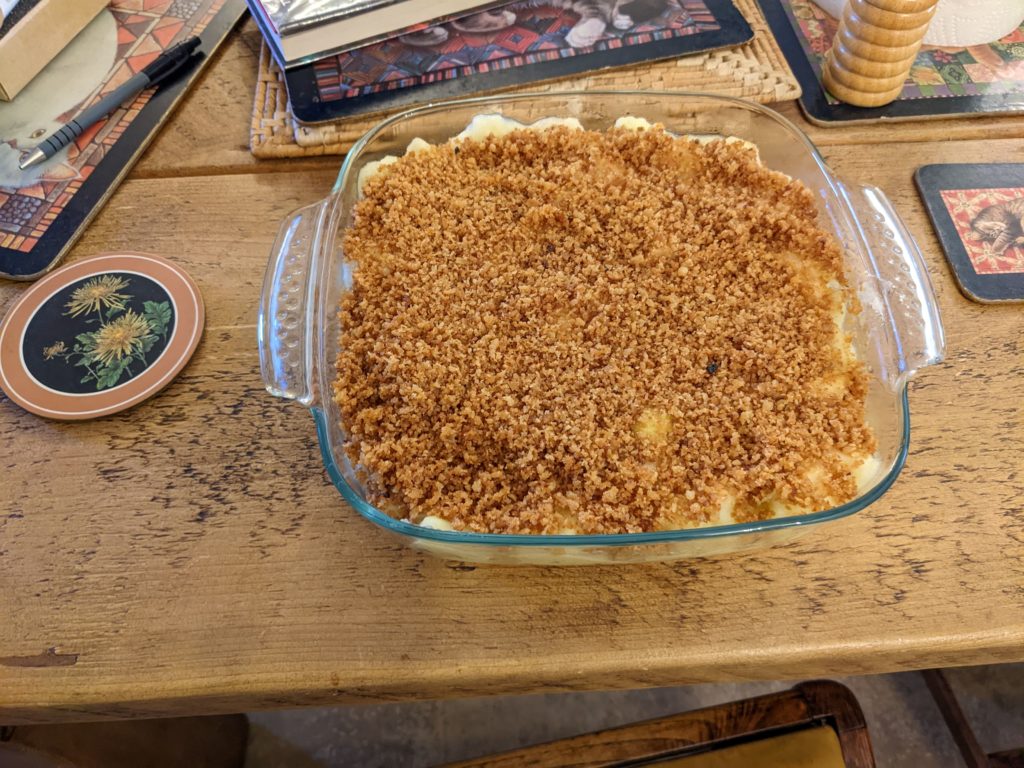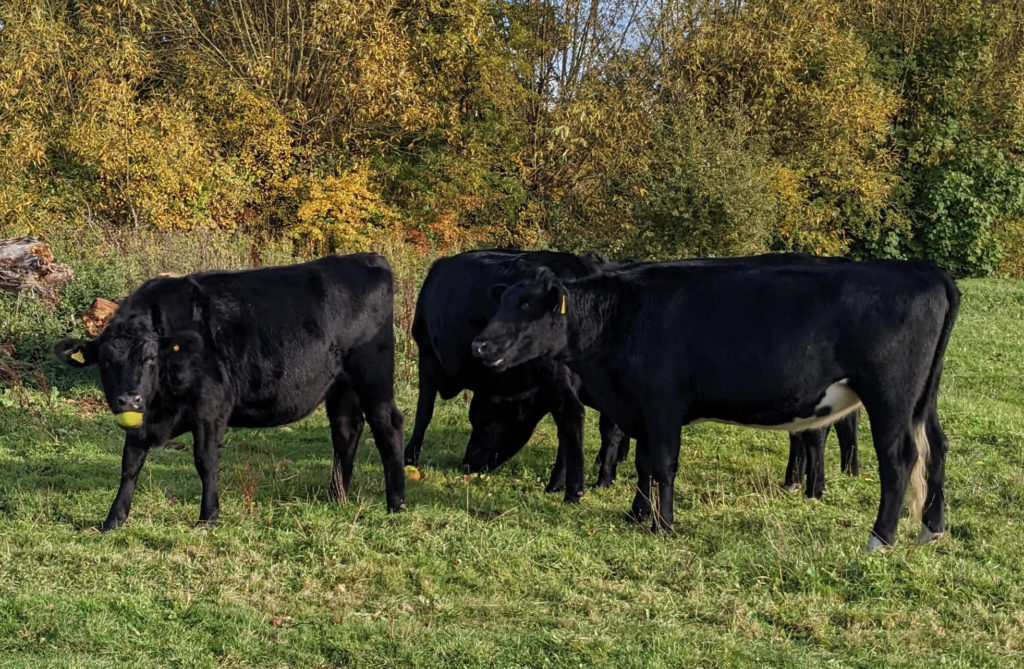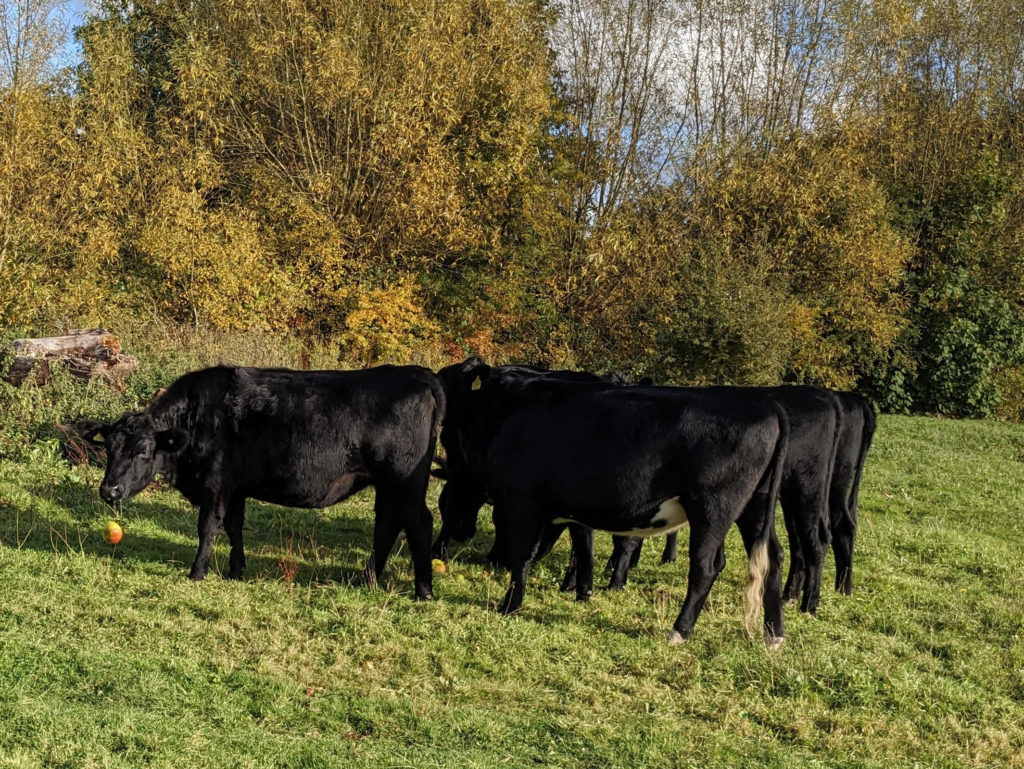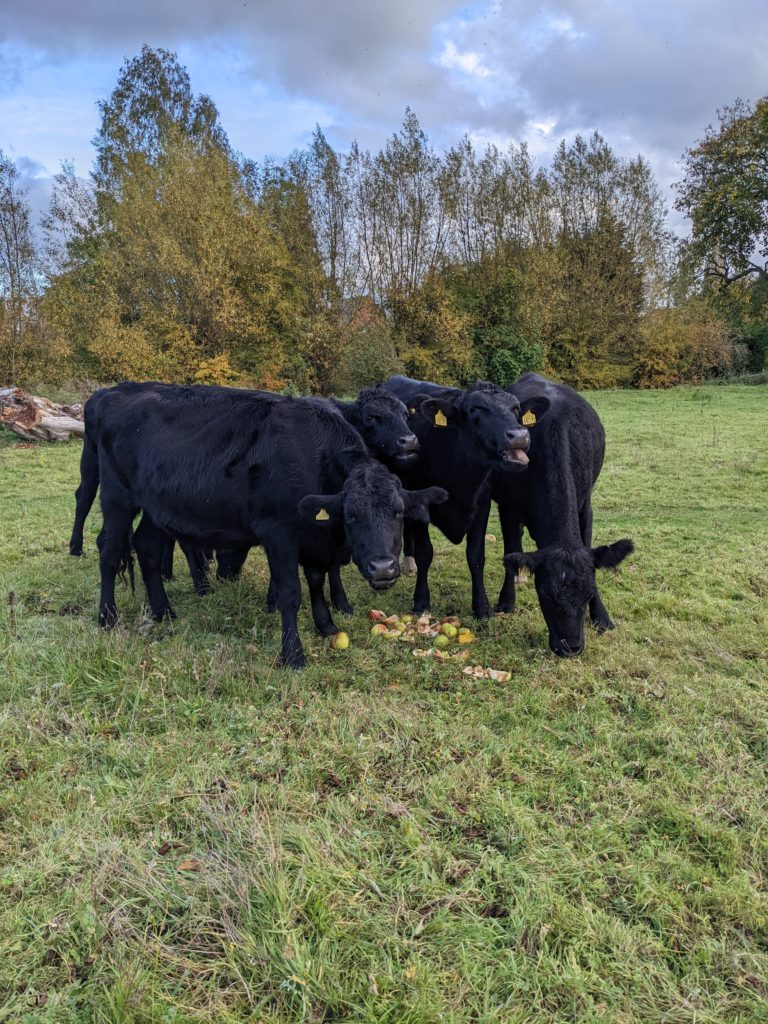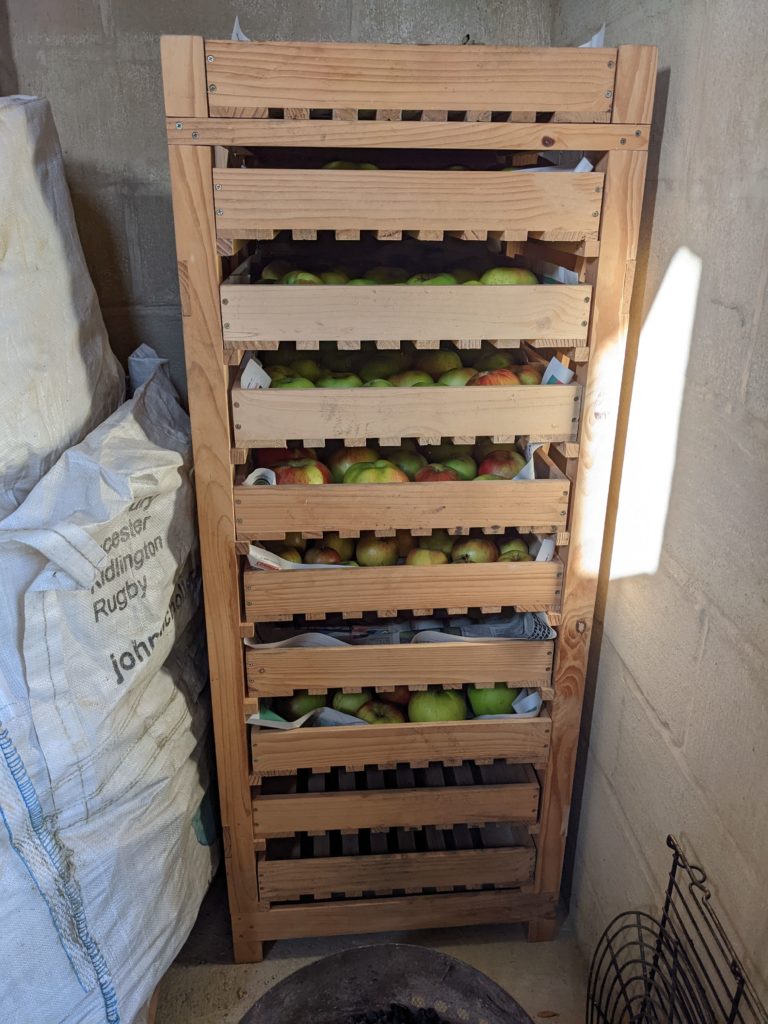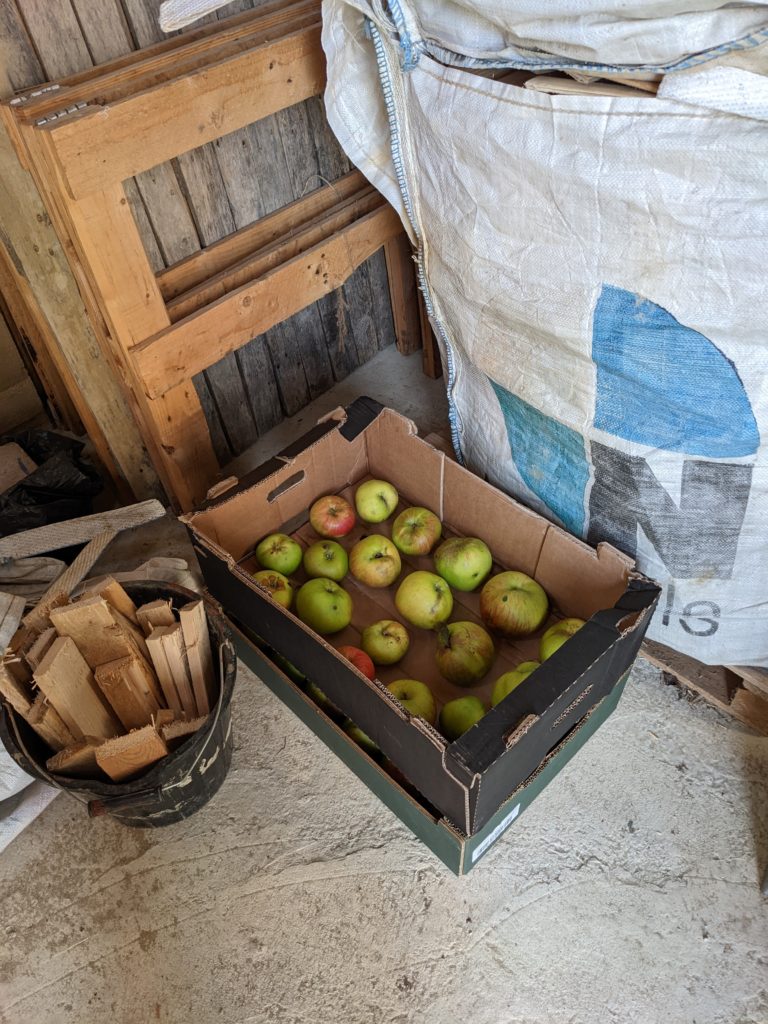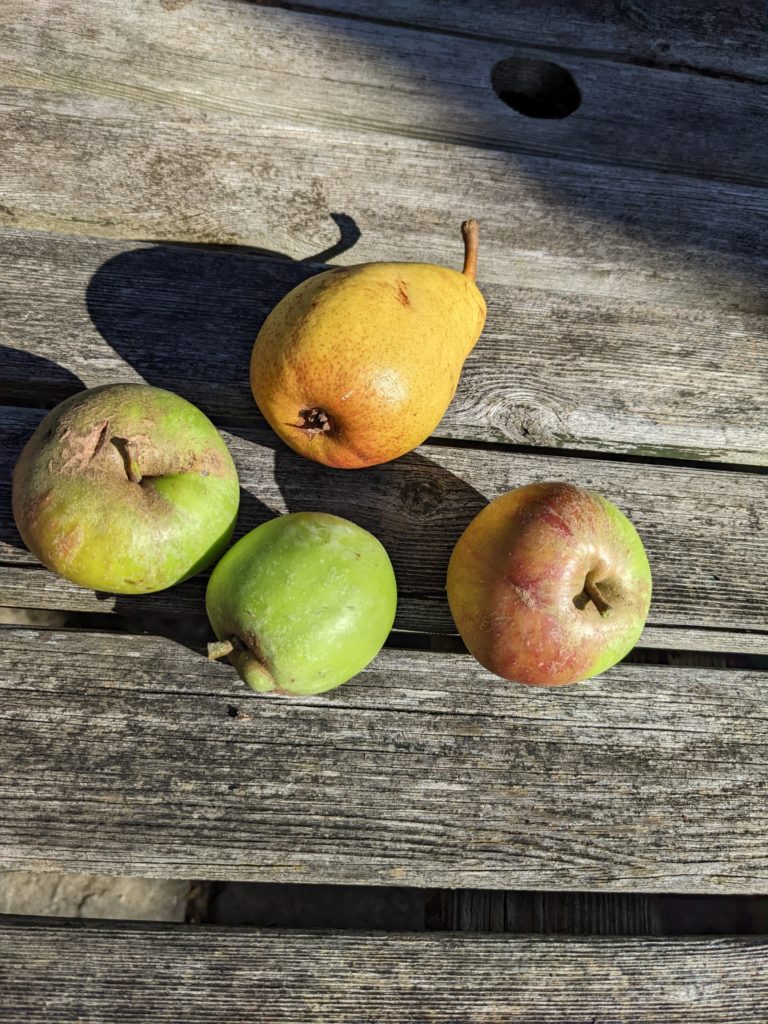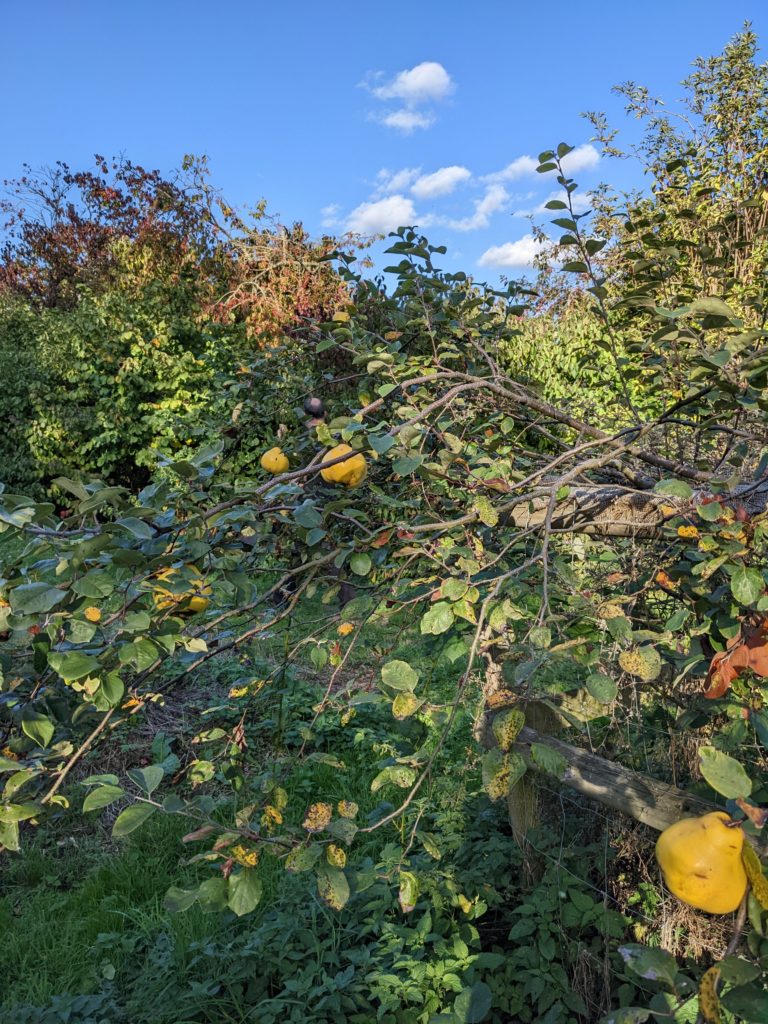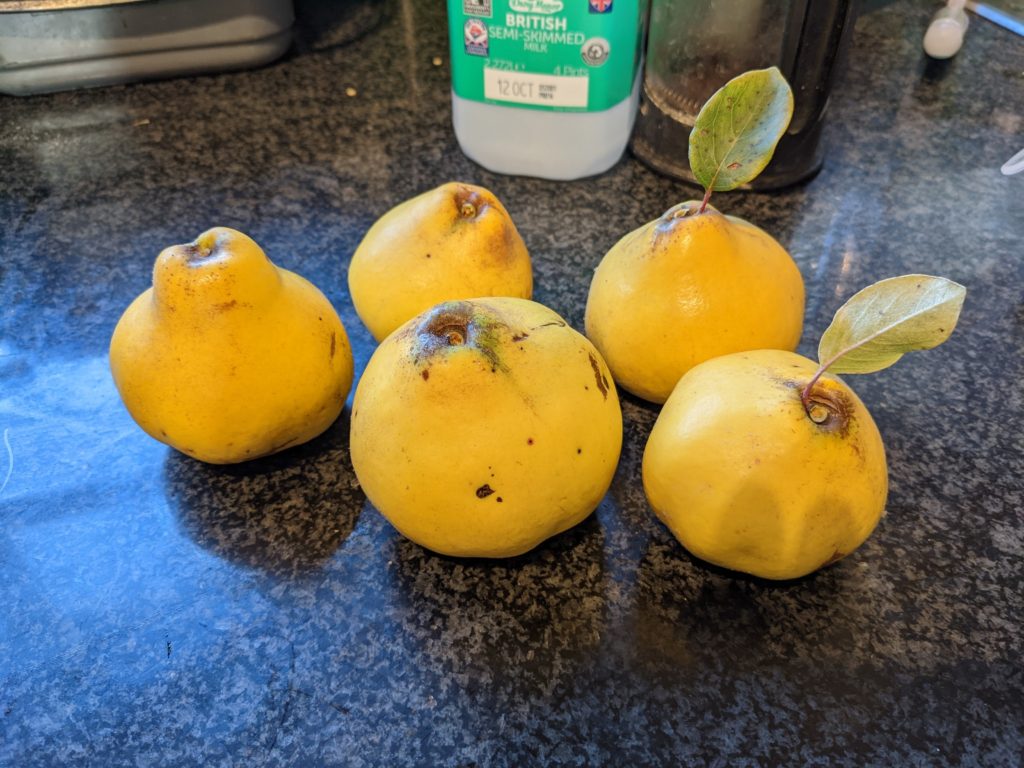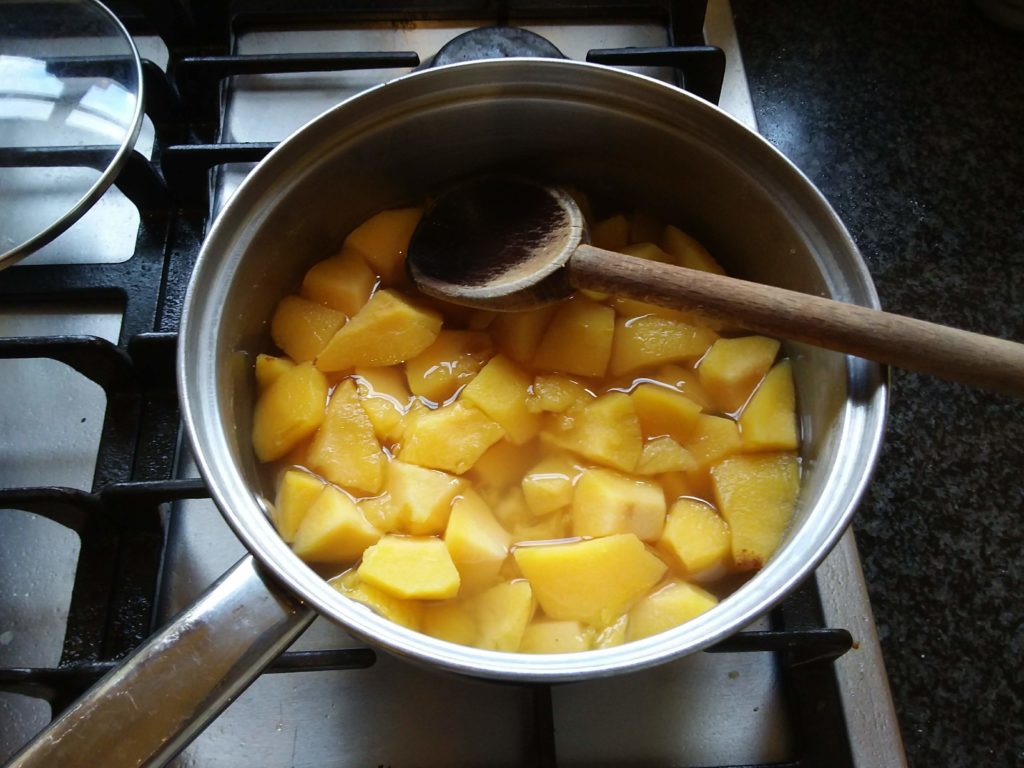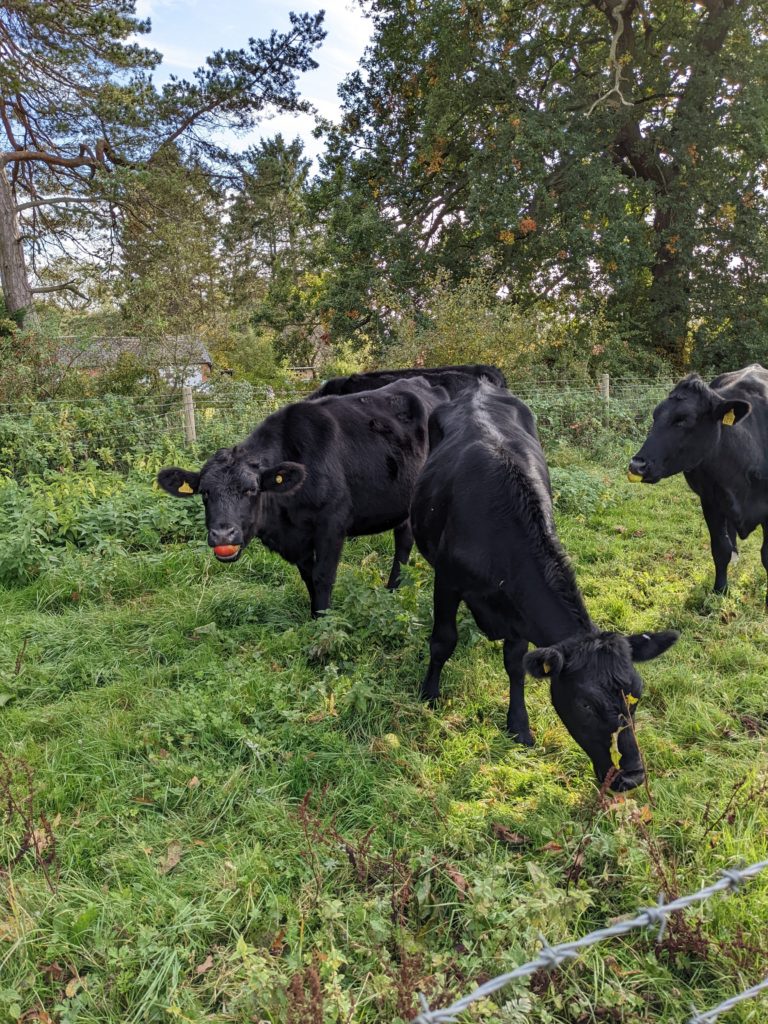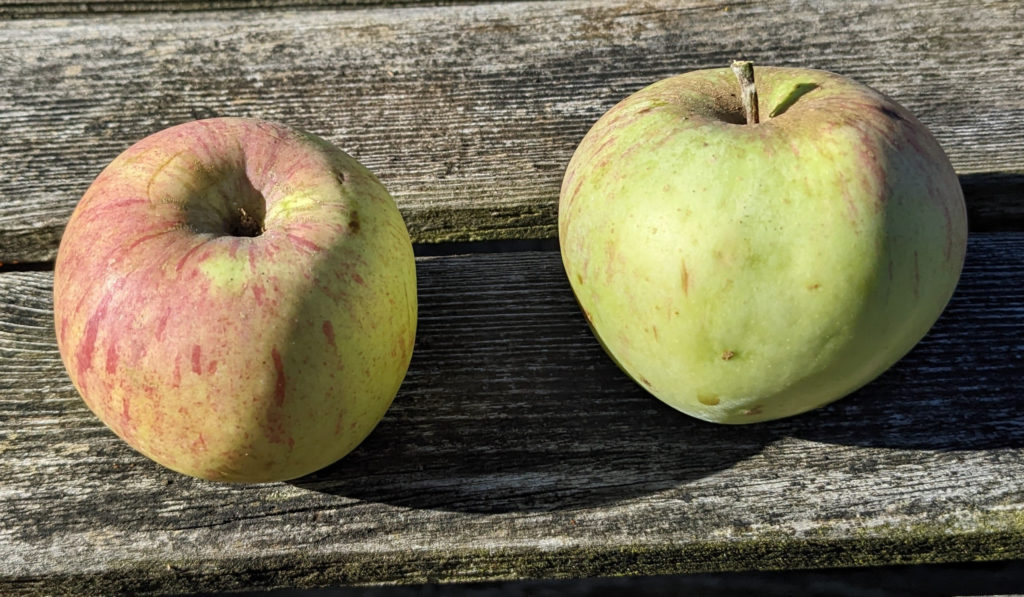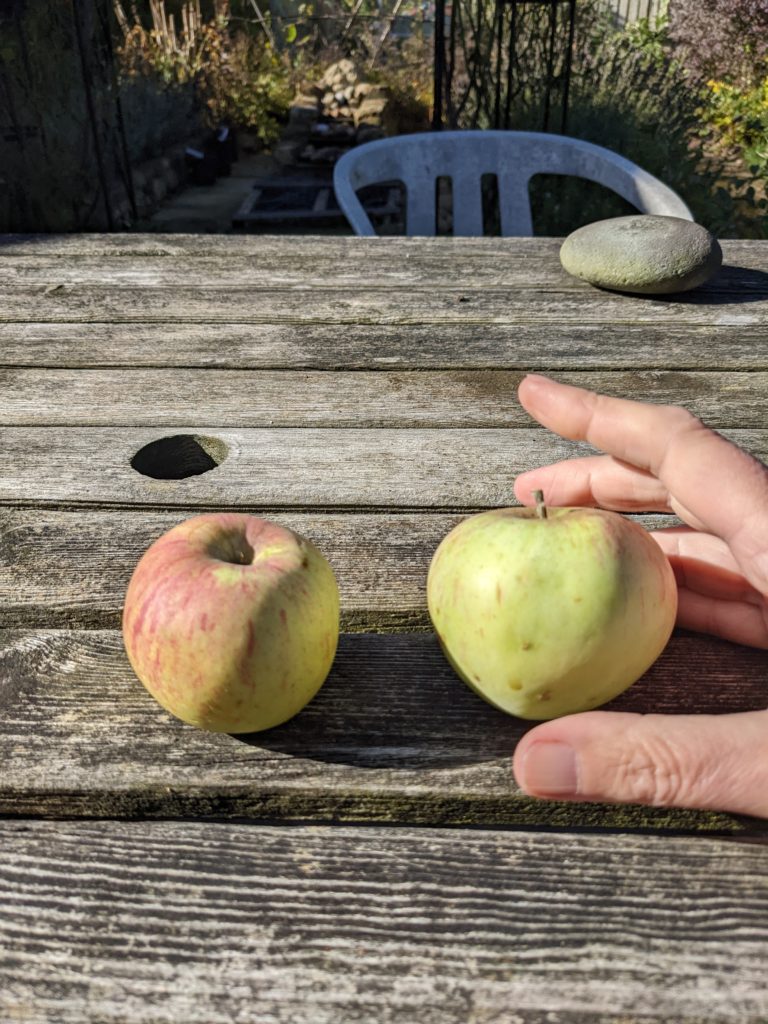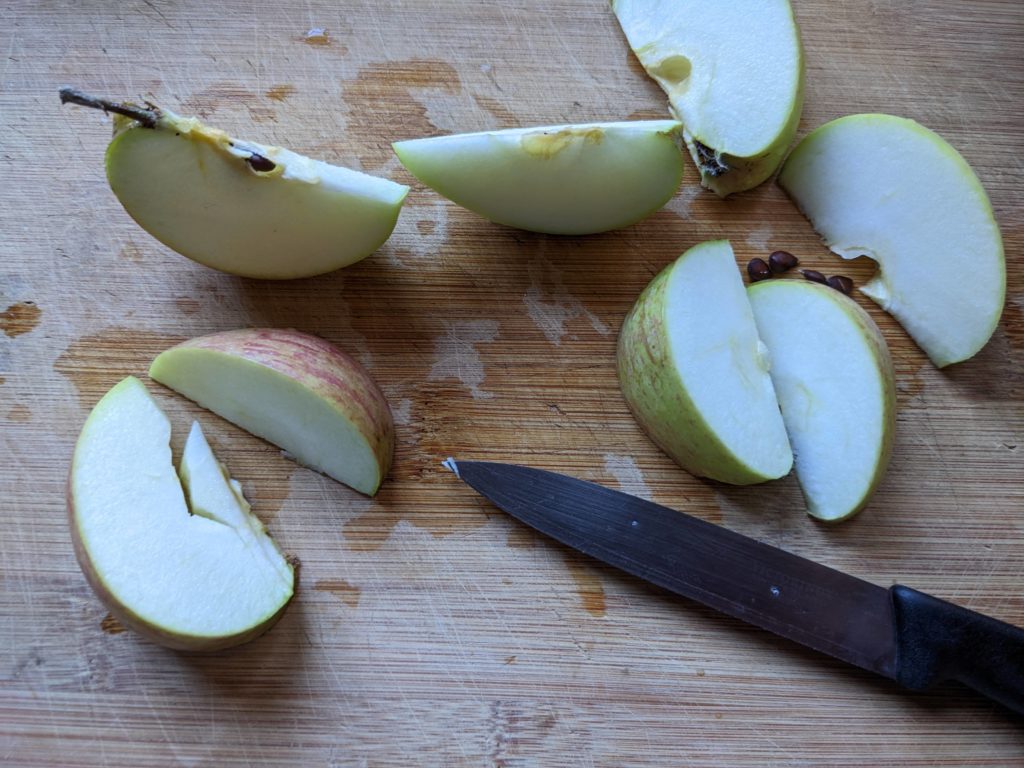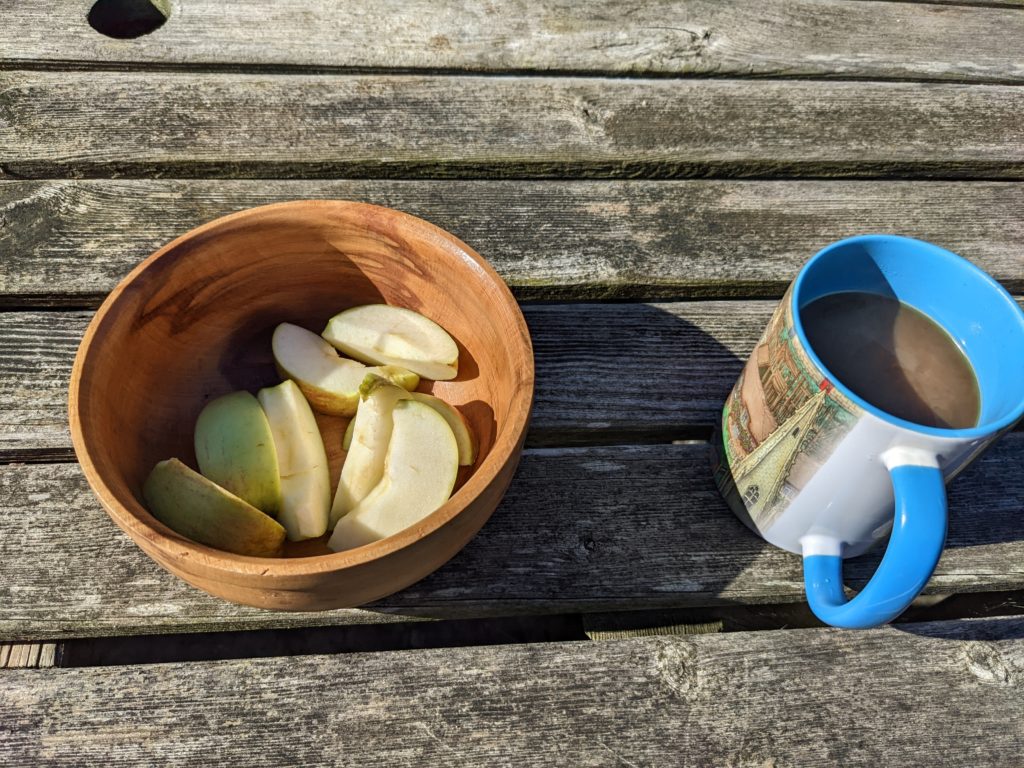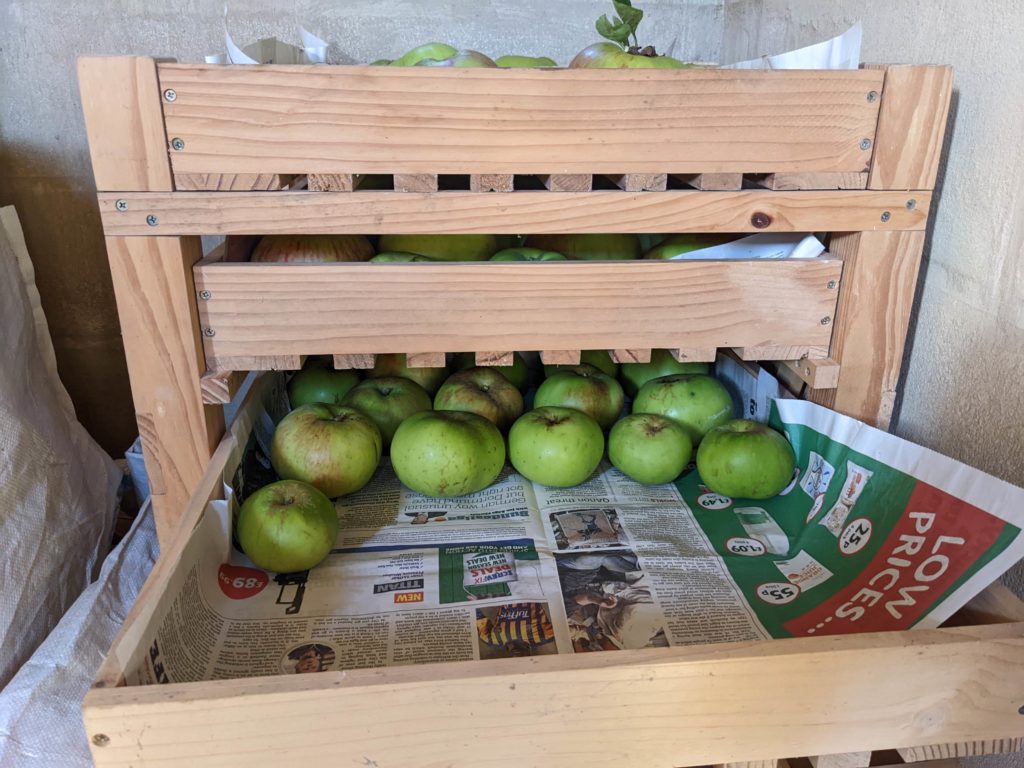The apple store is empty! It’s the end of March, just before Easter so we’re in the tail end of Lent (from the Old English ‘lencten’ meaning ‘when the days lengthen’ i.e. spring), and I took the last two apples out of the store in the gatehouse. This is the time of year known as the Hungry Gap (which may explain why Lent is in this season – make a virtue of a necessity), as the stored food runs low and there’s not much in season yet. Well, there are plenty of nettles, and I imagine the early medieval people would have cooked and eaten them along with other spring greens. Protein from eggs? But not so much bulk food, unless you had a good harvest and good fortune storing it.
Quite a lot of the apples weren’t eatable, as the flesh turned brown, or bruises spread across the entire fruit. But the bottom couple of drawers seem to have fared better, with the apple flesh still white and crisp. Maybe it was that bit cooler?
The bulk of last year’s apples were Bramleys, which ripen up into a very pleasant eating apple in defiance of the supermarket practice of only selling them green (and huge!). My Bramleys varied between VAST MONSTERS and cute little things.
This year I hope we’ll get more of the other varieties, just for, well, variety, and also because some of them may be better keepers – and older varieties, closer to what our Anglo-Saxon nuns would have known.
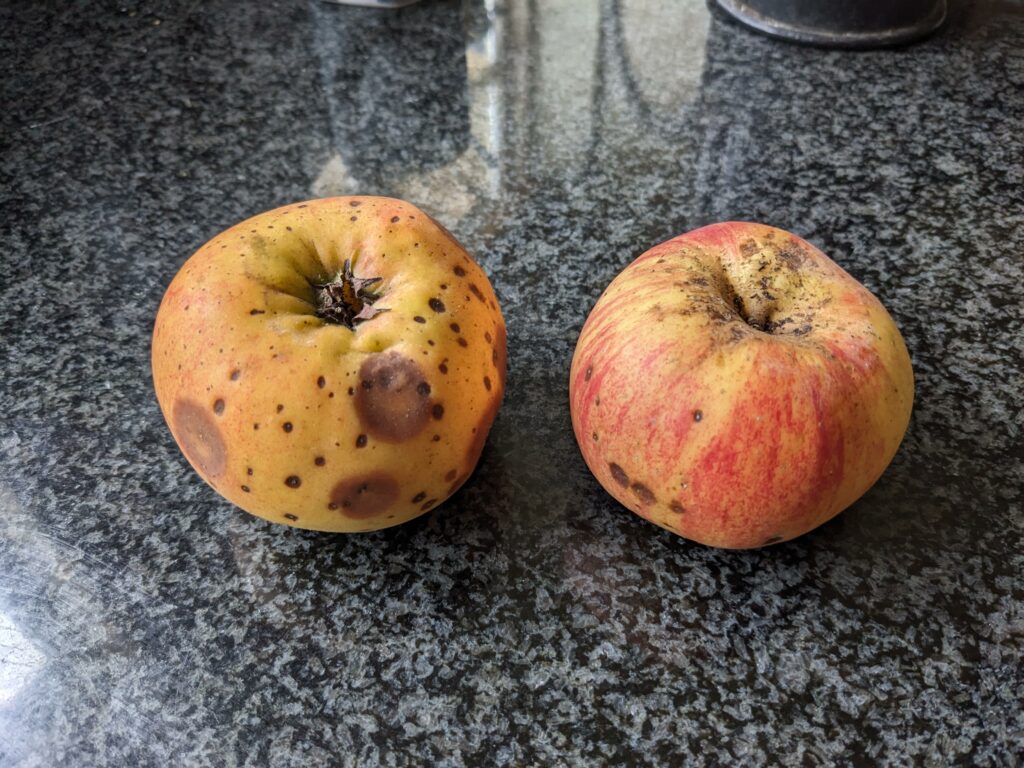
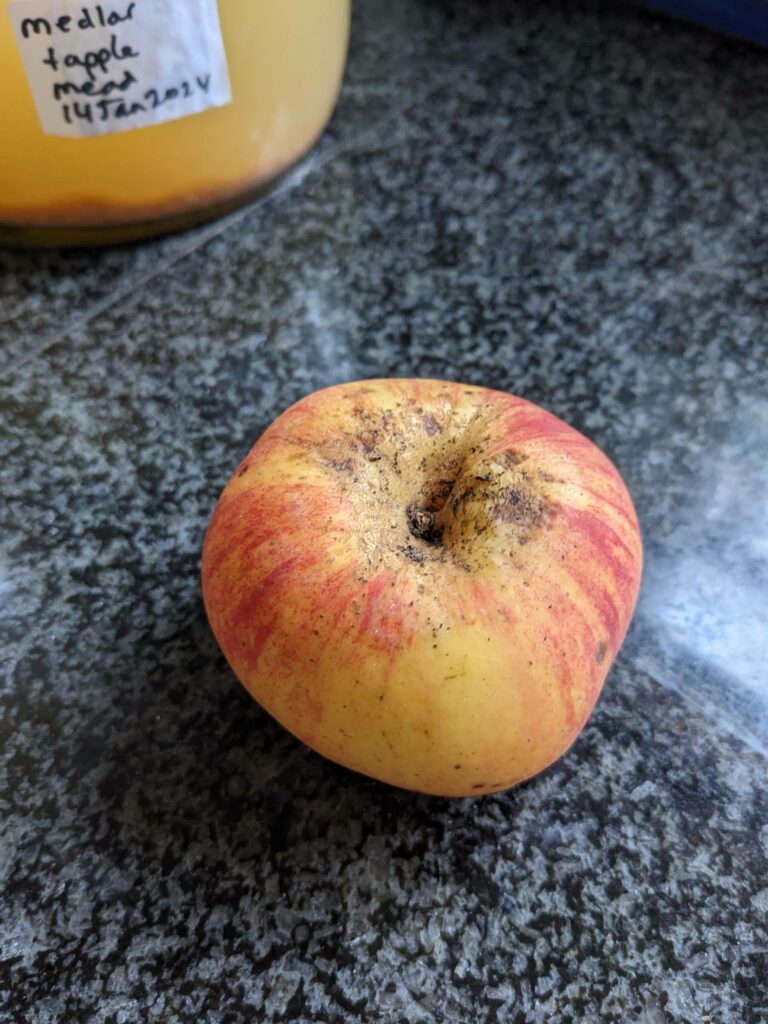
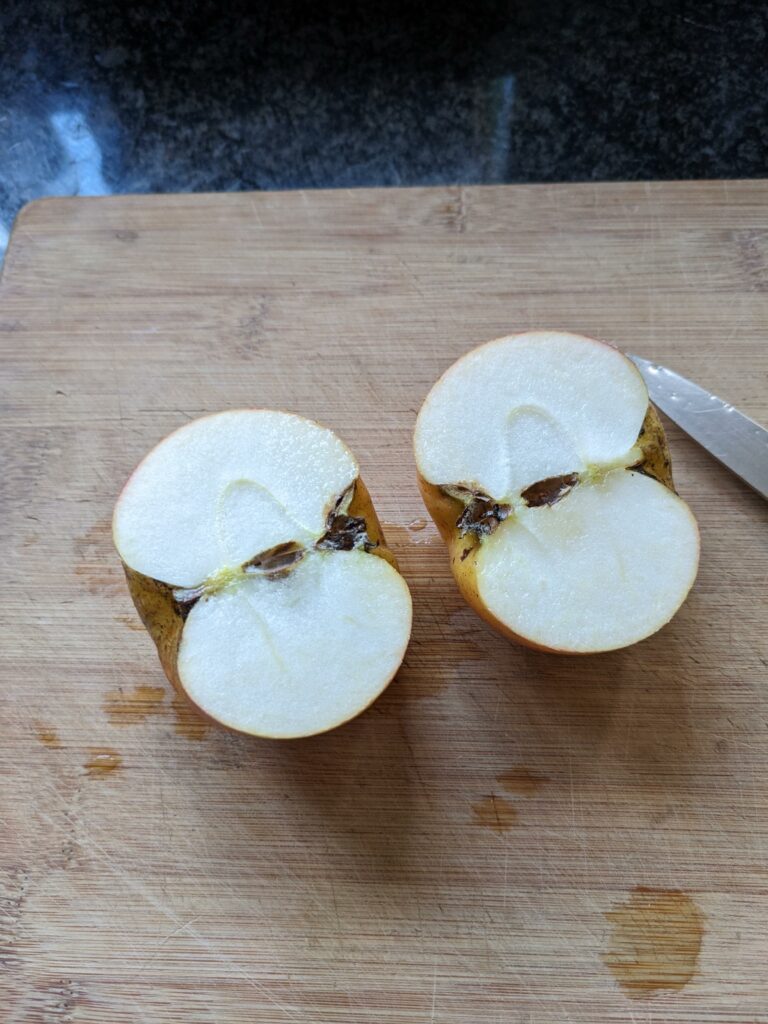
The final apple was a beaut! Very tasty.
The orchard did well; the apples have kept me going at about 1 per day plus crumbles and apple sauce, since 1 August 2023 to 26 March 2024. The trees were affected by a late air frost, or something, and didn’t produce at their maximum, though the Bramley did pretty darn well. Some of my friends reported having no harvest at all last year, so Rumwoldstow was luckier than many.
What we didn’t get was pears; the older two (planted in 2018) flowered and set fruit, but dropped them all. When they were pruned, it transpired that they must have not been planted properly because there was a pot-shaped block of earth with the tree coming out of it, which wobbled alarmingly. Our pruner, Michael, suggested that the trees dropped their fruit because they didn’t feel stable enough to carry them, and also that perhaps because the ground is so wet, they hadn’t felt it necessary to send roots out searching for water. Al and Michael staked them up to be more stable, also the quince was a bit sideways so they staked that too. Fingers crossed this will help them. The two apple trees (Wyken Pippin and Hambledon Deux Ans) look fine; they may have been planted from bare roots? It shows the importance of spreading the roots from a pot-bound tree when planting it out. I’ll have to bear this in mind when the seedlings are being set loose on the world, wherever and whenever that ends up being.
The pear trees are in blossom, as are the plum and damsons. The apples are just starting to bud.
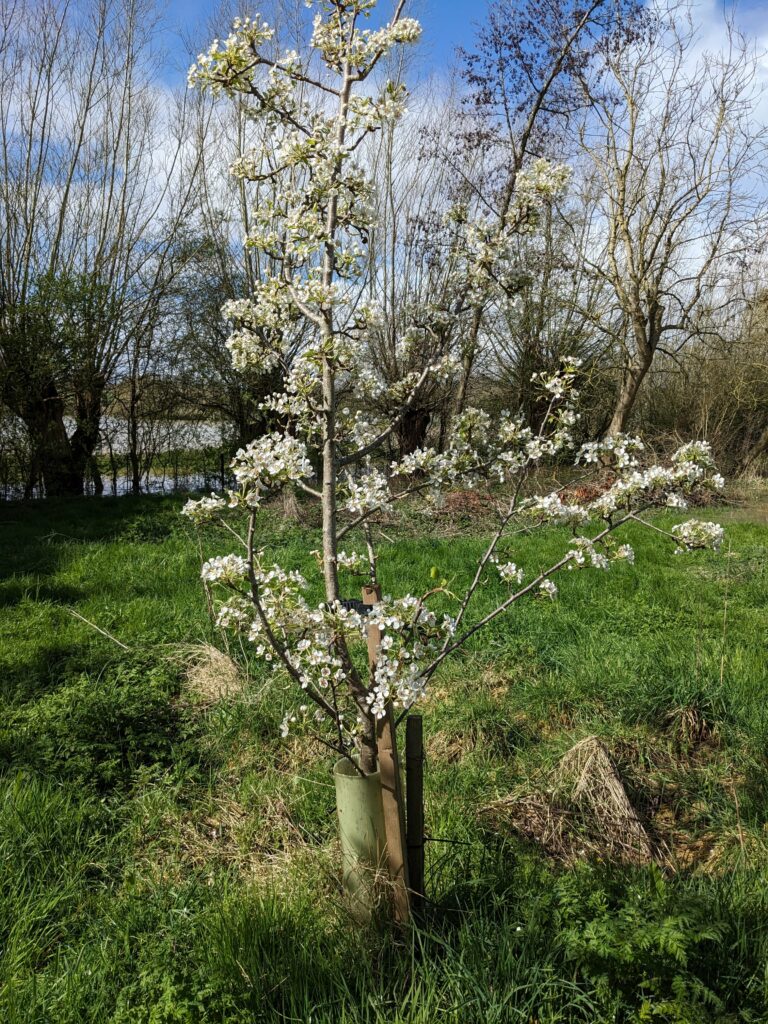
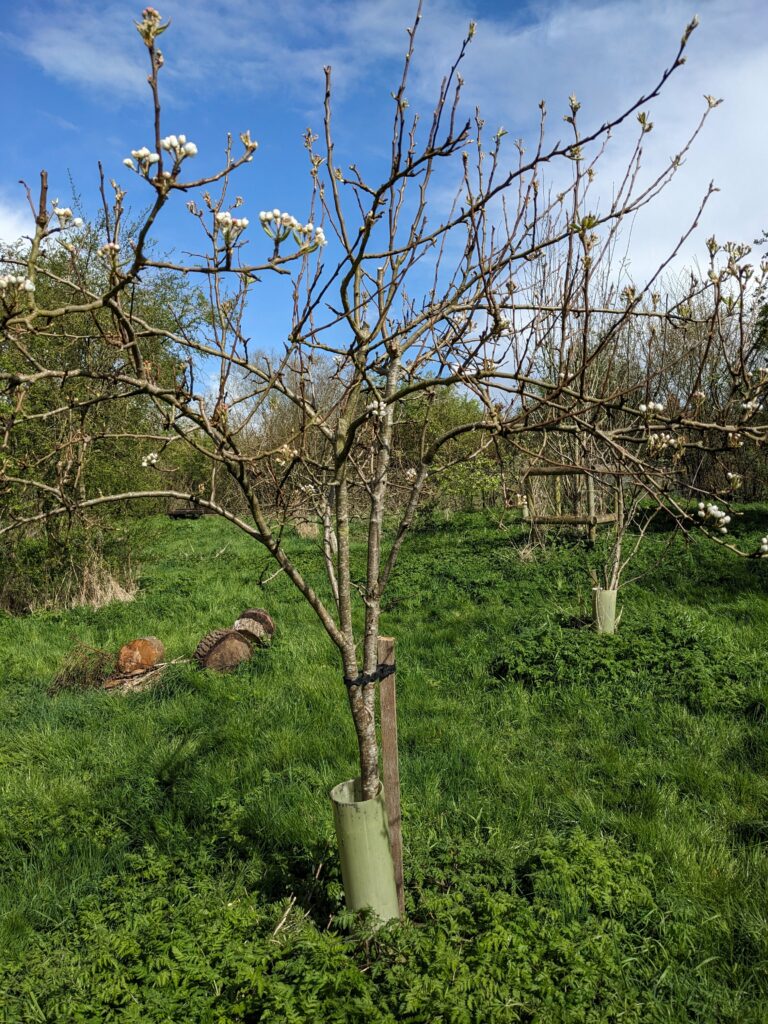
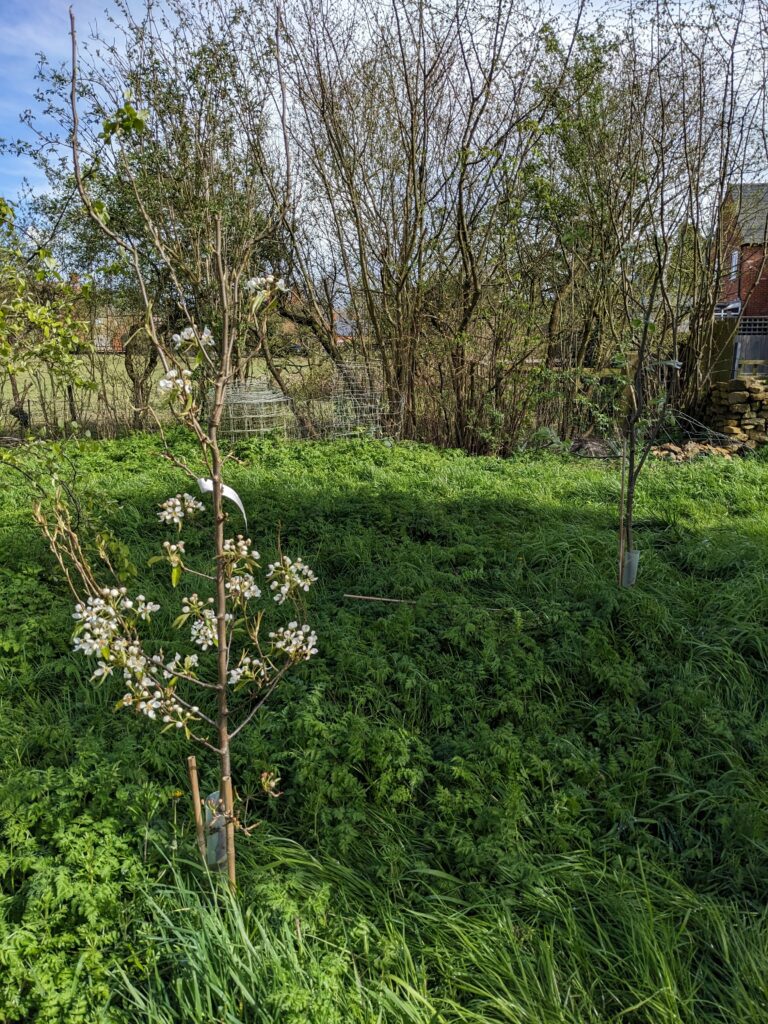
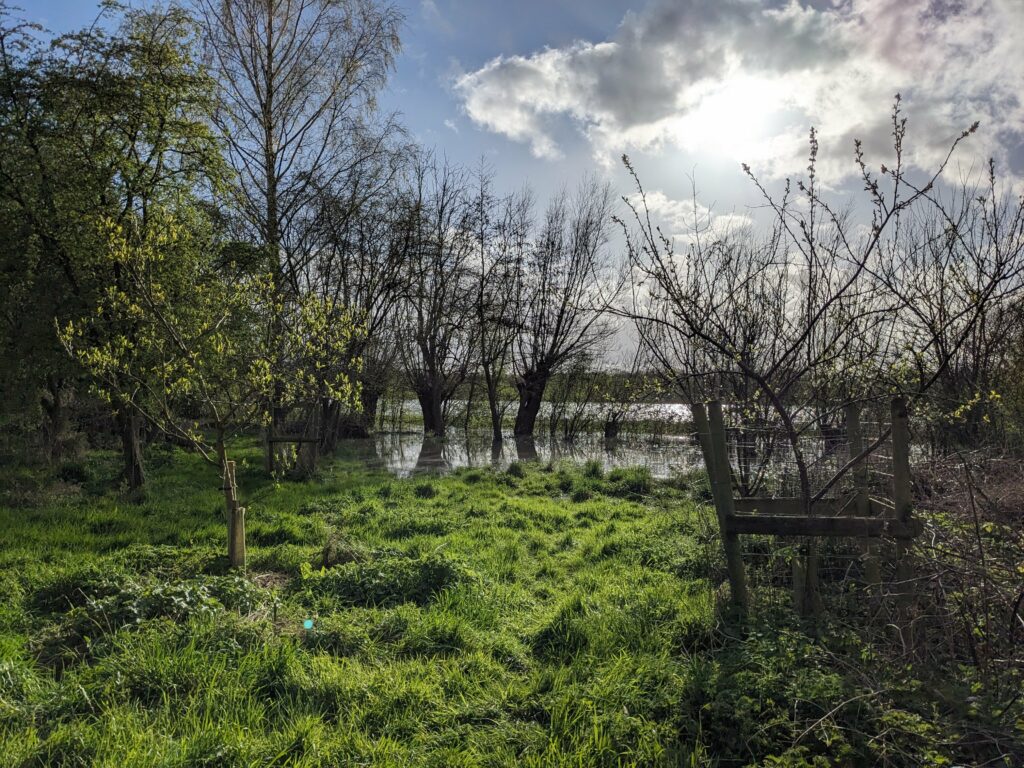
So yeah, a very strong sense of ending and renewal.
